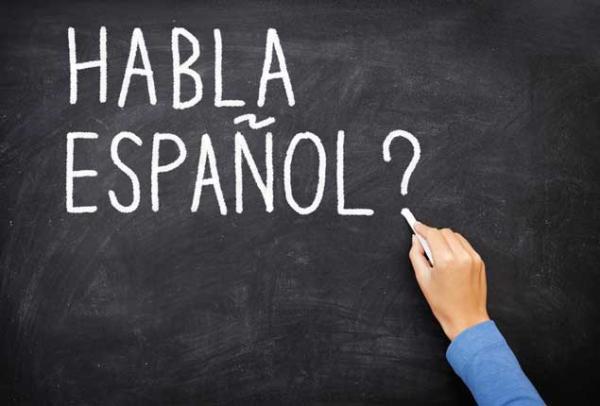Pronouns play an essential duty in any type of language, allowing succinct and also reliable communication. In Spanish, the correct use of pronouns is essential for expressing ideas, making clear partnerships, and also avoiding unnecessary rep. In this write-up, we will offer an extensive overview to Spanish pronouns, checking out different kinds, their functions, and also use. By mastering Spanish pronouns, students can enhance their language skills as well as properly share their thoughts as well as suggestions.
Subject Pronouns
Subject pronouns replace nouns that operate as the topic of a sentence. In Spanish, subject pronouns consist of “yo” (I), “tú” (you, casual), “él” (he), “ella” (she), “usted” (you, formal), “nosotros/nosotras” (we), “vosotros/vosotras” (you all, informal), “ellos/ellas” (they), as well as “ustedes” (you all, formal). Understanding subject pronouns is important for building concise as well as clear sentences.
Direct Object Pronouns
Straight things pronouns change nouns that receive the activity of a verb directly. The Spanish direct things pronouns are “me” (me), “te” (you, casual), “lo” (him/it, masculine), “la” (her/it, feminine), “nos” (us), “os” (you all, informal), “los” (them, manly), and also “las” (them, womanly). Using straight item pronouns appropriately simplifies syntax and also stays clear of rep.

Indirect Object Pronouns
Indirect item pronouns change nouns that suggest the recipient or recipient of an action. In Spanish, the indirect things pronouns are “me” (to/for me), “te” (to/for you, informal), “le” (to/for him/her/you, formal), “nos” (to/for us), “os” (to/for you all, informal), as well as “les” (to/for them/you all, official). Understanding when and also just how to use indirect object pronouns helps clarify the desired recipients of benefits or activities.
Reflexive Pronouns
Reflexive pronouns indicate that the subject of the verb is likewise the object of the activity. In Spanish, reflexive pronouns include “me” (myself), “te” (yourself, informal), “se” (himself/herself/yourself, official), “nos” (ourselves), “os” (yourselves, casual), and “se” (themselves/yourselves, official). Grasping reflexive pronouns enables learners to reveal actions carried out by or on the topic.
Possessive Pronouns
Controlling pronouns change nouns to indicate ownership or property. Spanish controlling pronouns include “mío/ mía” (mine), “tuyo/tuya” (your own, casual), “suyo/suya” (his/hers/yours, official), “nuestro/nuestra” (ours), “vuestro/vuestra” (yours, informal), and “suyo/suya” (theirs/yours, official). Recognizing possessive pronouns promotes clear communication of ownership as well as partnerships.
Demonstrative Pronouns
Demonstrative pronouns indicate specific things or people. Spanish demonstrative pronouns consist of “éste/ ésta” (this), “ése/ ésa” (that one), “aquél/ aquélla” (that a person over there), “éstos/ éstas” (this ), “ésos/ ésas” (this ), as well as “aquéllos/ aquéllas” (those over there). Demonstrative pronouns aid show distance and compare various things or people.
Loved one Pronouns
Relative pronouns attach a reliant condition to a major stipulation, providing extra information regarding a noun or pronoun. In Spanish, the loved one pronouns are “que” (that/which/who), “quien/quienes” (who/whom), “cuyo/cuya” (whose), and also “donde” (where). Understanding how to make use of relative pronouns permits the creation of complicated sentences with extra details.
Interrogative Pronouns
Interrogative pronouns present concerns as well as queries. In Spanish, the interrogative pronouns include “quién” (that), “qué” (what), “cuál/ cuáles” (which), “dónde” (where), “cuándo” (when), “por qué” (why), and “cómo” (exactly how). Mastering interrogative pronouns makes it possible for students to ask concerns as well as collect info efficiently.
Indefinite Pronouns
Indefinite pronouns describe nonspecific individuals, objects, or quantities. Spanish indefinite pronouns consist of “alguien” (somebody), “nadie” (no one), “algo” (something), “nada” (absolutely nothing), “alguno/algunos” (sum), “ninguno/ningunos” (none), “otro/otros” (other), as well as “mucho/muchos” (a lot). Understanding uncertain pronouns improves the capability to reveal basic or unidentified entities.
Mutual Pronouns
Reciprocal pronouns express activities or relationships that include common reciprocity. In Spanish, the reciprocatory pronouns are “nos” (ourselves), “os” (yourselves, casual), as well as “se” (themselves/yourselves, formal). Using mutual pronouns properly permits for the specific expression of shared actions or connections.
Grasping Spanish pronouns is essential for efficient communication as well as language effectiveness. Whether it’s subject pronouns, object pronouns, controlling pronouns, or other types, recognizing their functions as well as use is crucial. By acquainting on your own with Spanish pronouns as well as exercising their correct application, you can share ideas concisely, avoid repeating, and also communicate accurate significances. Accept the flexibility of Spanish pronouns and boost your Spanish language abilities. ¡ Buena suerte! (Good luck!).


